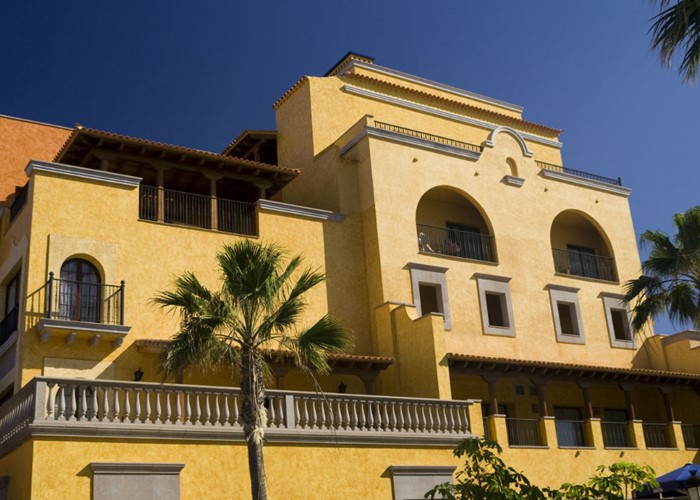The best and worst properties to buy

We find out which types of home go up in price fastest and which lag behind.
How desirable is a particular property?
It very much depends on its location, property type, size, age, general condition and state of repair, and whether it is a freehold or leasehold property. Of course, perhaps the important consideration is price, as well as the potential for future gains.
Today, I'm going to review the second of these factors (property type) to reveal the price trends for different kinds of residence.
Which properties gain value fastest?
Using 28½ years of quarterly data from the Halifax House Price Index (HPI), here are the long-term gains from owning different types of property, including flats, bungalows, terraced, semi-detached and detached homes. (This doesn't take rental income and expenses into account, so more closely reflects the situation for homeowners, rather than landlords).
1. All properties
Here's our benchmark figure, which covers UK residential properties of all types:
|
Q3/2011 |
£172,937 |
|
Q1/1983 |
£29,615 |
|
Change |
£143,322 |
|
Change |
484% |
|
Yearly gain |
6.4% |
As you can see, over the past 28½ years, the average price of a UK property has risen from below £30,000 to almost £173,000. This is a price increase of 484%, which works out at a compound growth rate of 6.4% a year. Thus, on average, house prices have doubled every 11 years here in Britain.
Now we have our top-level growth figure, let's check the price action since 1983 for different types of property:
2. Flats and maisonettes
|
Q3/2011 |
£161,330 |
|
Q1/1983 |
£24,522 |
|
Change |
£136,808 |
|
Change |
558% |
|
Yearly gain |
6.8% |
Flats and maisonettes have gained in value by 6.8% a year since 1983, slightly ahead of our 6.4% average for all properties. Perhaps growth in smaller family units and single-person households (partly driven by fewer marriages and more divorces) has spurred demand for smaller homes?
3. Terraced
|
Q3/2011 |
£144,009 |
|
Q1/1983 |
£21,206 |
|
Change |
£122,803 |
|
Change |
579% |
|
Yearly gain |
7.0% |
Terraced residences -- the mainstay of couples and small families as starter homes -- have increased in value by 7% a year in the long term. As a result, terraced homes top our price-increase survey.
4. Semi-detached
|
Q3/2011 |
£159,474 |
|
Q1/1983 |
£27,091 |
|
Change |
£132,383 |
|
Change |
489% |
|
Yearly gain |
6.4% |
The price of the good old British 'semi' has risen in line with the market as a whole, rising 6.4% a year over almost three decades.
5. Bungalows
|
Q3/2011 |
£188,184 |
|
Q1/1983 |
£31,725 |
|
Change |
£156,459 |
|
Change |
493% |
|
Yearly gain |
6.4% |
Like semis, British bungalows have performed bang in line with the UK average, rising in price by 6.4% a year.
6. Detached
|
Q3/2011 |
£275,286 |
|
Q1/1983 |
£45,211 |
|
Change |
£230,075 |
|
Change |
509% |
|
Yearly gain |
6.5% |
Being the most expensive and secluded homes, detached properties are at the top of the housing ladder. Somewhat surprisingly, these sought-after properties have hardly beaten the market as a whole, with yearly growth of 6.5% barely above our 6.4% average for all properties.
Today, a typical detached home in the UK costs over £275,000, which is more than ten times the average before-tax, full-time wage. Clearly, buying an upmarket home is only for those with high salaries and big deposits!
In summary
There is very little difference in the long-term growth rates of semi-detached, bungalows and detached homes. All of these have appreciated in value at roughly the same rate as the overall UK market.
However, the highest price gains -- in percentage terms -- come from flats, maisonettes and terraced houses. I suspect that these additional gains have been produced by extra demand for these homes since the late Nineties, driven by competition from buy-to-let landlords.
In short, not all properties are equally desirable and some residences grow in value faster than others.
However, please don't rely too much on these data, as the housing market has changed considerably since the early Eighties. Also, not one property category showed growth below the UK average, which suggests Halifax's data should be taken with a sizeable pinch of salt.
Furthermore, as old homes are knocked down and replace with new builds, properties become smaller, thanks to 'developer densification'. As a result, the UK's property mix will continue to change over time, altering demand for different types of dwelling. Thus, the trends of the past are unlikely to continue unchanged into the future.
More: Find and compare low-rate mortgages | 5 ways to cut your mortgage costs in 2012 | House prices: Best and worst performing areas in the UK this year
Comments
Be the first to comment
Do you want to comment on this article? You need to be signed in for this feature